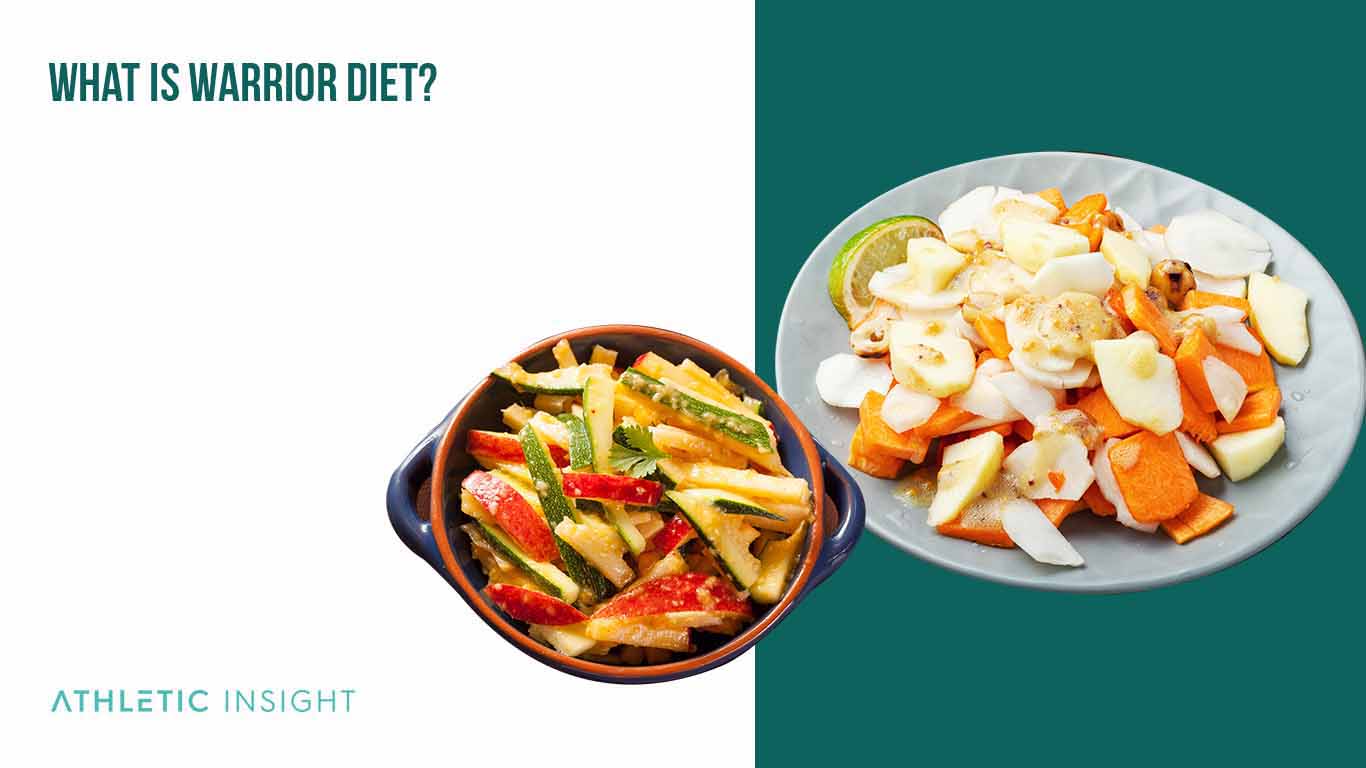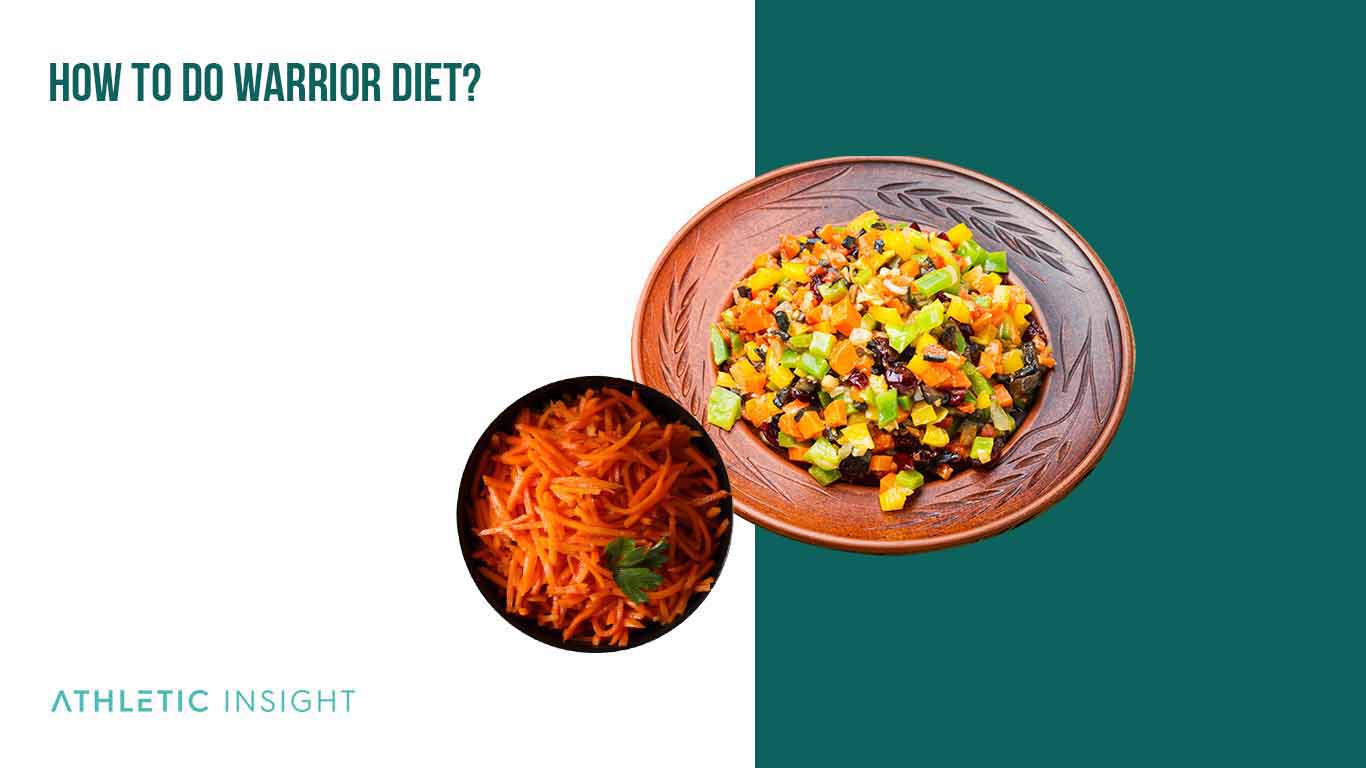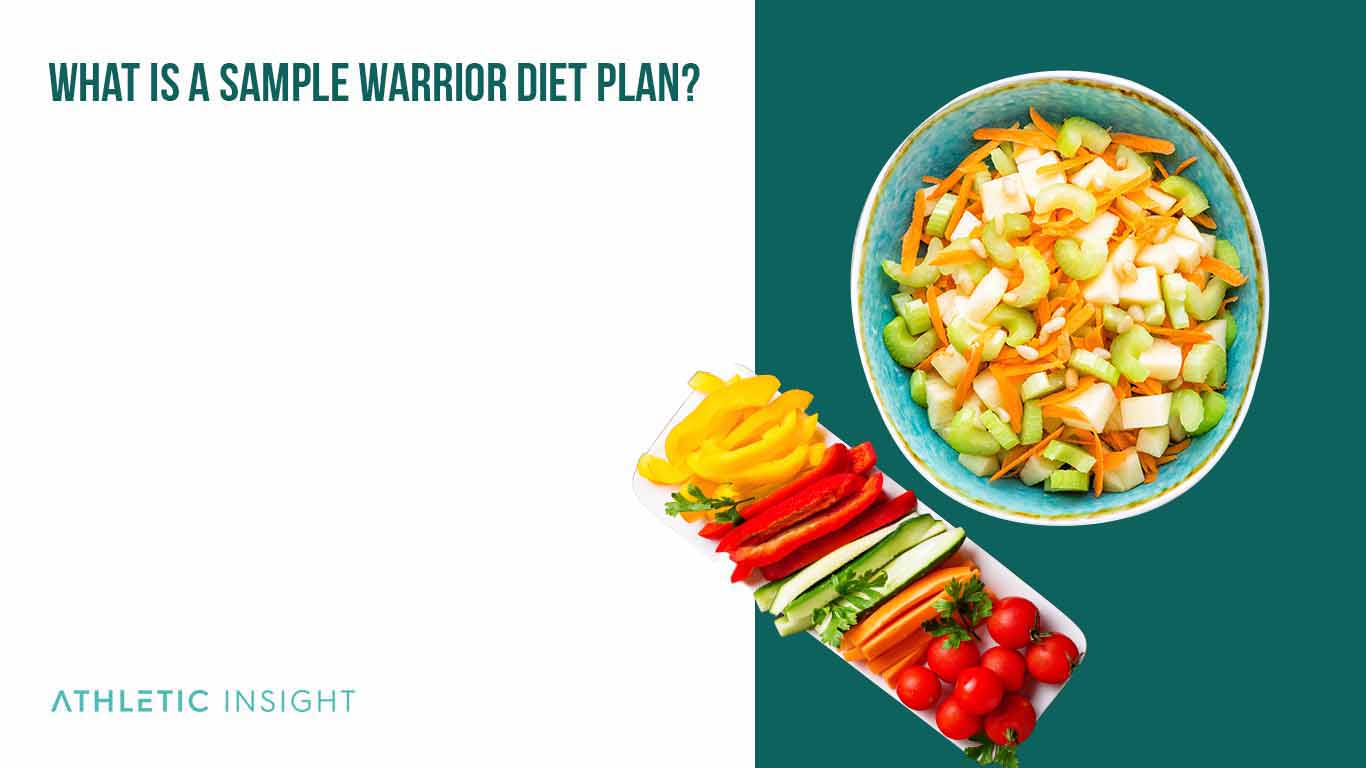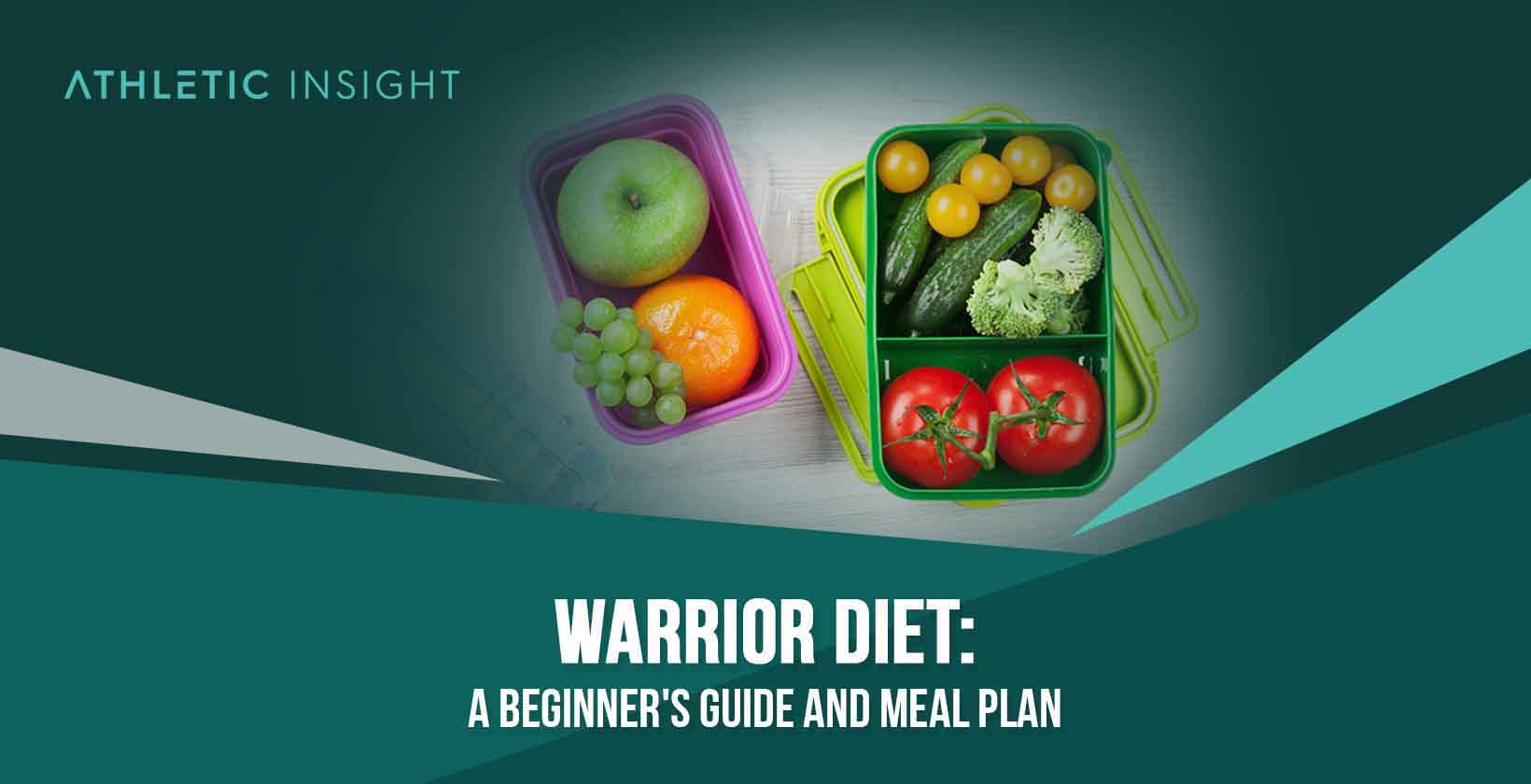The Warrior Diet is based on the idea of intermittent fasting, which entails alternating between periods of consuming and abstaining from food. During the day, followers are encouraged to eat in a small eating window of four to five hours and then fast for the remaining 14-18 hours. Scientists have linked this approach with numerous health benefits, including improved digestion and higher concentration levels.
The Warrior Diet also focuses on consuming nutrient-dense whole foods that provide the body with essential vitamins and minerals. This type of eating helps to promote satiety and prevent overeating while also helping to maintain a healthy weight.
The Warrior Diet is about healthy eating and includes an exercise routine to maximize results. The exercise routine can range from light jogging to intense weight lifting, depending on the individual’s fitness level. This type of exercise helps to strengthen muscles and improve overall health.
Finally, the Warrior Diet includes lifestyle habits that promote well-being, like getting enough sleep and reducing stress levels, which are essential for maintaining a healthy body and mind.
The benefits of the Warrior Diet include improved digestion and weight loss. Fasting helps reset the digestive system, meaning it can work more efficiently and absorb more nutrients from food. In addition, due to the short eating window, followers of the diet are likely to consume fewer calories than they otherwise would and thus lose weight over time.
What Is a Warrior Diet?
The Warrior Diet blends the benefits of intermittent fasting and exercise, to give those who follow it outstanding results. The Warrior Diet emphasizes the consumption of nutrient-dense whole foods and the practice of intermittent fasting, which involves alternating between periods of consuming and abstaining from food throughout the day.

Ori Hofmekler created the Warrior Diet with the goal of maximizing your body’s natural outposts. It is called the Warrior Diet because it mimics the behaviors of warriors from the past. There is minimal eating during the day and a large meal in the evening for this diet plan which requires a small adjustement for those used to large meals early in the day.
How Does a Warrior Diet Work?
The Warrior Diet works by putting your body into a state of fasting. During the day, followers of the diet are encouraged to eat in a small eating window of four to five hours and then fast for the remaining 14-18 hours. Incorporating fasting into your lifestyle has numerous health benefits, including improved digestion and higher concentration levels.
While your body is fasting, your cells start to break down fat and glucose for energy. Breaking down fat into glucose helps your body burn more calories, which can lead to weight loss.
The Warrior Diet also encourages followers to consume nutrient-dense whole foods that provide the body with essential vitamins and minerals. This type of eating helps to promote satiety and prevent overeating while also helping to maintain a healthy weight.
The Warrior Diet is about more than nutrition. It is about lifestyle. It also includes an exercise routine to maximize results and lifestyle habits that promote well-being, such as getting enough sleep and reducing stress levels.
What Are the Health Benefits of the Warrior Diet?
There are a wide variety of health benefits of the Warrior Diet such as weight loss, improved digestion, increased energy levels, mental clarity, improved immunity, and lower blood sugar.
- Weight loss: As mentioned above, the Warrior Diet encourages short eating windows and the consumption of nutrient-dense whole foods. This diet can help you consume fewer calories than you would otherwise and thus promote weight loss.
- Improved digestion: Fasting helps reset the digestive system, making it more efficient and absorbing more nutrients from food.
- Increased energy levels: Intermittent fasting has been linked with increased energy levels due to increased metabolic efficiency.
- Mental clarity: Fasting helps to improve mental clarity and focus due to the body producing more endorphins and dopamine.
- Improved immunity: Short periods of fasting can help strengthen the immune system by helping fight inflammation and enhance cell regeneration.
- Lower blood sugar: The Warrior Diet focuses on consuming nutrient-dense whole foods, which can help reduce the body’s blood sugar levels.
What Are the Health Risks of the Warrior Diet?
Despite the advantages of the Warrior Diet, there are also some significant health concerns such as fatigue, irritability, and fainting.
- Fatigue: Not eating in the morning can lead to fatigue and sluggishness while your body adjusts to the Warrior Diet.
- Irritability: Going too long between meals can lead to irritability and mood swings.
- Fainting: Without enough calories, the body can enter into a state of hypoglycemia, leading to fainting.
How to Do a Warrior Diet?
The Warrior Diet consists of three week-long phases. After completing these three phases, you can continue to cycle through the three phases for as long as you like. At a minimum, you should complete one complete cycle of three phases of the Warrior Diet for maximum results.

- Phase 1: The first phase of the Warrior Diet is detox. This week, you are at a calorie deficit of around 1000 calories. During the day, you can drink juice, broth, yogurt, hard-boiled eggs, and raw fruits and vegetables. Once a 20-hour fasting period, you can eat a salad with light dressing with some lean protein. You can drink as much coffee, unsweetened tea, and water as you want.
- Phase 2: You also fast for 20 hours daily during the second phase. You can drink liquids like both juices and eat hard-boiled eggs during fasting. You can eat salads, lean protein, and cooked vegetables in the evening. You cannot eat grains or starches during the second phase.
- Phase 3: The third phase sees your diet oscillate. You fast for 20 hours each day; you alternate between high-carb days and high-protein days over the week. You can eat corn, potatoes, pasta, oats, and rice on high-carb days. You should eat 8-16 hours of animal protein on high-protein days with no carbs.
While on the Warrior Diet, you consume around 1200-1500 calories daily. This amount may change depending on how much you snack during the day and what your caloric needs are for your exercise regime.
There are some best practices to follow while on the Warrior Diet. They include the following tips.
- Drink lots of water throughout the day. Staying hydrated will help you avoid hunger pains.
- Make sure to get enough sleep and find ways to reduce stress. Getting enough sleep will reduce your hunger sensation.
- Try to exercise for at least 30 minutes daily or engage in some form of physical activity throughout the week. Thirty minutes of exercise will maximize your weight loss during the diet.
- Eat slowly and savor your meals. Eating slowly will help your brain think that you are full, which can decrease hunger.
- Ensure you get enough micronutrients and vitamins from fresh, natural food sources.
By following these tips, you can ensure that you reap the full benefits of the Warrior Diet.
What Are the Foods That You Can Eat While on a Warrior Diet?
The foods you can eat while on the Warrior Diet are fruits, vegetables, grains, legumes, nuts, seeds, healthy fats, and proteins.
- Fruits: apples, pears, bananas, berries, peaches
- Vegetables: carrots, lettuce, tomatoes, cabbage
- Grains: whole wheat bread, quinoa, oatmeal
- Legumes: black beans, pinto beans
- Nuts: almonds, walnuts, pecans
- Seeds:
- Healthy fats: olive oil, butter
- Proteins: lean protein, chicken, beef, fish, eggs
These foods are important because they will provide your body with clean energy and keep you satiated throughout your fast.
What Are the Foods that You Should Avoid While on a Warrior Diet?
While completing the warrior diet, you should avoid certain meat, poultry, fish and shellfish, meat-based ingredients, eggs and dairy products.
- Meat: fatty meats like pork belly
- Poultry
- Fish and shellfish
- Meat-based ingredients: highly processed meat products like deli meat and hotdogs
- Eggs
- Dairy products
In addition to these foods, you should also avoid deep-fried foods, processed sugar, and other highly processed foods. These unhealthy foods can make it harder to stay on track with your Warrior Diet.
Who Should Do a Warrior Diet?
The Warrior Diet is not for everyone. It’s important to remember that the diet should only be done by healthy individuals already accustomed to a healthy lifestyle.
The Warrior Diet is best suited to individuals looking for an efficient and effective way to stay in shape or improve their health. It’s also ideal for those who don’t want to count calories or follow a restrictive diet plan.
The Warrior bodybuilding diet is an ideal diet for individuals who are bodybuilding. Intermittent fasting can help you learn and look your best for a competition, and you can still get enough protein in your diet to support your exercises.
If you are pregnant, nursing, or have a medical condition, consult your doctor before beginning this diet.
How Easy Is a Warrior Program to Follow?
The Warrior Program is not easy to follow. It requires discipline, consistency, and dedication to get the most out of it. The most challenging part of the diet is not eating for 20 hours a day. However, getting used to the fasting period and learning how your body responds can become more accessible.
The Warrior Diet also requires nutrition knowledge and an understanding of properly fueling your body with the right foods. You should also know what exercise will complement and benefit your diet.
What Is a Sample Warrior Diet Plan?
This diet plan is an example of what you can eat in a week on the Warrior Diet. While this is only a sample, it will provide you with an effective overview of what to expect.

Day 1
- Breakfast: Avocado toast with an egg and fresh fruit
- Lunch: Chicken avo BLT wrap
- Dinner: Chicken shawarma bowls
Day 2
- Breakfast: vegetable omelet on an English muffin
- Lunch: Greek salad with grilled chicken
- Dinner: Stuffed peppers with ground turkey
Day 3
- Breakfast: Breakfast BLT salad
- Lunch: Lettuce boats with grilled chicken
- Dinner: Chopped greek salad
Day 4
- Breakfast: Citrus green energy smoothie
- Lunch: Chipotle Salad bowl with tuna
- Dinner: Tuna and swiss wrap with cheese
Day 5
- Breakfast: Banana protein pancakes
- Lunch: Shimp and spinach caesar salad
- Dinner: Chipotle ranch chicken on flatbread
Day 6
- Breakfast: Oatmeal with sliced apples and flaxseed
- Lunch: Baked Salmon with avocado and potatoes
- Dinner: Chicken fajitas with peppers and onions
Day 7
- Breakfast: Cucumber and avocado toast
- Lunch: Crispy vegan fish tacos
- Dinner: West African peanut soup
What Are the Best Recipes for Warrior Diet?
Since the Warrior Diet is not restrictive regarding food or calories, you can make many great recipes.
What Are the Facts About the Warrior Diet?
These are some crucial facts about the Warrior Diet, including what happens to your body during the first week, the weight loss you can achieve, the hours of intermittent dating, the sweets you can eat, and the health benefits.
- The First Week: During the first week, your body will change. You will be hungry throughout the day and may experience some lightheadedness. Your body will also adjust to the 4-hour eating window and begin to produce ketones, an energy source for your body.
- Weight Loss: On the Warrior Diet, you can expect to lose an average of 1-2 pounds per week.
- Intermittent Fasting Hours: On the Warrior Diet, you only eat for 4 hours and fast for 20 hours each day.
- Eating Dessert: Fruit and dark chocolate are the only sweets allowed on this diet.
- Health Benefits: The Warrior Diet is an all-around healthy diet choice. Its nutrient-dense foods are naturally low in saturated fat and cholesterol and high in beneficial vitamins, minerals, and amino acids. This diet can help you lose weight, have more energy, and improve your overall health.
How Much Does a Warrior Program Cost?
The Warrior Program is free. It does not cost anything to fast or follow the exercise guidelines. However, if you want to follow the instructions in the book, the book costs $22. The food for the Warrior Diet costs around $150 to $200 per week, depending on if you cook your food and what you are eating.
What Are the Alternatives to the Warrior Diet?
The alternatives to the Warrior Diet are the Mediterranean Diet, Paleo Diet, Keto Diet, and Intermittent Fasting.
- Mediterranean Diet: The Mediterranean Diet emphasizes fruits, vegetables, whole grains, beans, nuts, and seeds. It also includes dairy products such as yogurt and cheese and limits red meat, poultry, and fish. The food you eat in the Mediterranean diet is similar to the Warrior Diet. However, the Mediterranean diet does not include intermittent fasting.
- Paleo Diet: The Paleo Diet is based on the food groups of early hunter-gatherers. It focuses on lean meat, fish, fruits, vegetables, nuts, and seeds. The Paleo Diet does not include dairy products and eliminates grains. It also does not have any intermittent fasting.
- Keto Diet: The Keto Diet is a high-fat, low-carb diet focusing on foods like avocados, nuts, seeds, and fatty fish. The Keto Diet does not include intermittent fasting but is known for its rapid weight loss results.
What Does a Warrior Diet PDF Involve?
A Warrior Diet PDF includes all the information about the Warrior Diet, including what it is, why you should follow it, how to implement it, and recipes. It also includes information about intermittent fasting and how it can help your diet. The Warrior Diet PDF has different meal plans and a list of foods to avoid when following the diet.
How to Find a 3D Warrior Diet Printable Plan?
You can find a Warrior Diet Printable Plan by searching on google or visiting the Warrior Diet website.
What Is the Difference Between the Warrior Diet and Omad Diet?
The Warrior Diet is an intermittent fasting diet where you eat one large meal in the evening after fasting for 20 hours a day. The Omad Diet is an intermittent fasting diet where you eat one meal daily, but the size and timing vary depending on the person. The Warrior Diet focuses on eating healthy and nutritious foods, while the Omad Diet does not have any restrictions on food.



